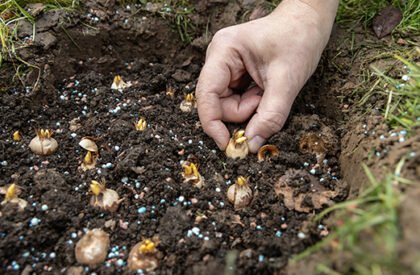

Overseeding is the practice of sowing grass seed over an existing lawn to improve its thickness, fill in bare spots, and enhance overall lawn health. It is typically done during the fall or early spring when the weather is ideal for grass growth. The goal of overseeding is to boost the lawn’s density and create a lush, vibrant appearance.
Benefits of Overseeding:
- Improved Lawn Density:
- How it helps: Overseeding fills in bare or thinning areas in your lawn, promoting a thicker, fuller grass cover.
- Why it’s important: A denser lawn helps crowd out weeds, reducing the space they have to grow and making it more resistant to pests and diseases.
- Better Tolerance to Stress:
- How it helps: By introducing new grass varieties, overseeding can help improve the lawn’s tolerance to stressors like drought, heat, and foot traffic.
- Why it’s important: A stronger, more resilient lawn can handle tough conditions better, staying healthy longer and requiring less maintenance.
- Enhanced Aesthetic Appeal:
- How it helps: A thick, uniform lawn improves the overall appearance of your yard.
- Why it’s important: A lush, green lawn can add curb appeal and make your outdoor space look more inviting.
- Filling in Bare Spots:
- How it helps: Overseeding helps fill in areas of your lawn that have worn down or become bare, such as spots under trees or along high-traffic paths.
- Why it’s important: By promoting new growth in these areas, overseeding improves the overall health and look of the lawn.
- Improved Soil Health:
- How it helps: Some overseeding blends include grasses that help improve the soil’s organic matter, enhancing its structure and nutrient availability.
- Why it’s important: Healthier soil means better conditions for grass growth and long-term lawn sustainability.
- Pest and Disease Resistance:
- How it helps: By introducing newer, disease-resistant grass varieties, overseeding helps improve your lawn’s ability to resist pests and diseases.
- Why it’s important: A healthier lawn is less likely to be affected by issues like fungal diseases, weeds, and pests.
- Preventing Erosion:
- How it helps: By thickening up the grass cover, overseeding helps protect the soil from erosion caused by wind or water.
- Why it’s important: Healthy grass roots help hold the soil in place, reducing the risk of erosion, especially in areas prone to heavy rainfall.
Best Time for Overseeding:
- Fall (Best Time): The cool temperatures and frequent rainfall of fall provide ideal growing conditions for grass seed. The soil is still warm enough to promote germination, and the cooler air helps reduce stress on the new grass.
- Spring: If fall isn’t an option, spring is the next best time for overseeding. Early spring allows new grass to establish before the summer heat arrives.
Tips for Successful Overseeding:
- Mow Your Lawn Short: Mowing the existing lawn short before overseeding helps the grass seed make good contact with the soil.
- Aerate the Lawn: Aerating before overseeding helps create holes in the soil that allow the grass seed to settle and grow better.
- Water Regularly: Keep the lawn moist after overseeding, especially during the germination period. Light, frequent watering is key to helping the seeds establish.
- Choose the Right Grass Seed: Make sure to select a seed variety that’s compatible with your region’s climate and your existing lawn type.

